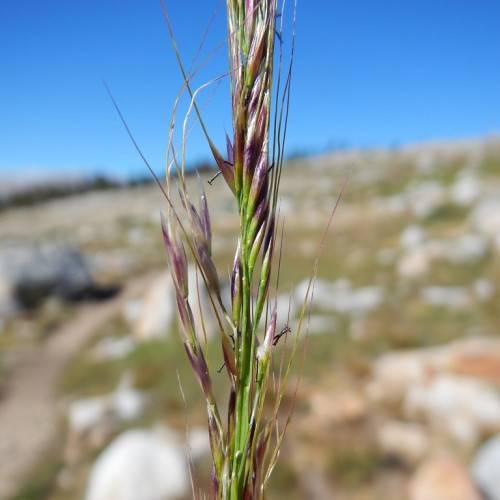
California Needlegrass
Achnatherum occidentale subsp. californicum
Watering:
Average
Hardiness Zone:
Flowers:
Flowers
Sun:
Sun, Partial Shade
Soil:
Clay, Sand, Loam
Growth Rate:
Low
Drought Tolerant:
Yes
Salt Tolerant:
Yes
Care Level:
Moderate
watering
Water Dore's needlegrass regularly to keep the soil moist but not wet. Depending on the climate and the time of year, generally water this species once or twice a week. In well-draining soils, water deeply, soaking the soil for an hour or more. In more compacted soils, aim for a light watering every few days. During summer months it may be necessary to increase watering frequency and during cooler months, reduce frequency. Monitor the soil regularly and adjust watering routine accordingly.
sunlight
Dore's Needlegrass (Achnatherum nelsonii subsp. dorei) thrives in full sun, meaning it needs at least 6 hours of direct sunlight on most days. While it can tolerate some shade, it will not reach its full potential and flowering potential will be reduced in partial sunlight. The best time for direct sun for Dore's Needlegrass is from mid-morning until late afternoon, when the strongest sunlight is available. This ensures that the plant receives a balanced amount of light without being exposed to too much.
pruning
Dore's Needlegrass should be pruned annually, preferably in late winter or early spring before new growth begins. Pruning should involve removing dead leaves and any damaged or diseased stems. Foliage should only be pruned to ensure a more compact and attractive plant, never to alter the plant's natural shape. Also, avoid over-pruning, as too much pruning may reduce flowering and grassy-textured foliage. To promote dense, healthy growth, it is a good idea to occasionally thin out foliage to allow for air circulation and light penetration.
